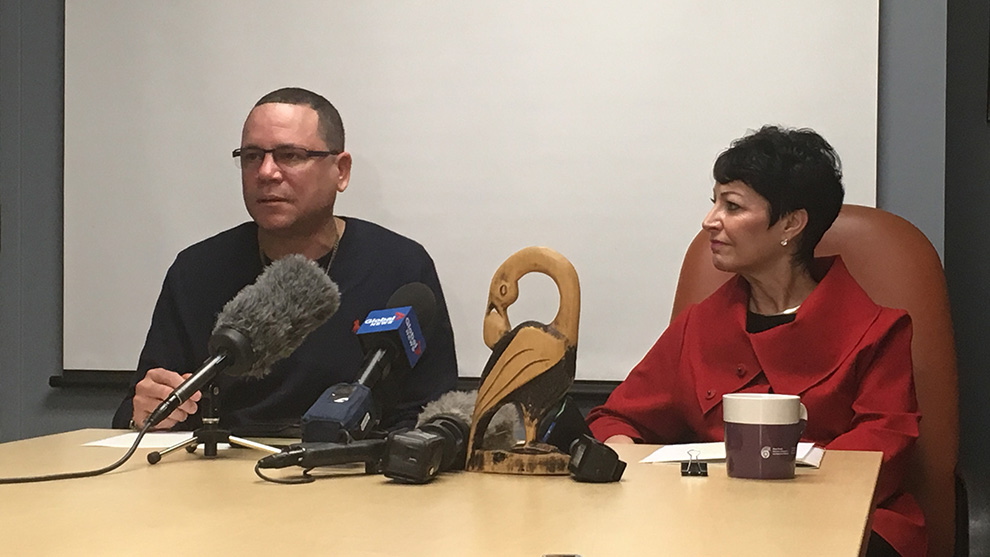Restorative Inquiry
“We were never at the table,” says Home for Colored Children survivor
Report on historic racism seeks to amend issues affecting African-Nova Scotians

caption
Tony Smith and Pamela Williams speak to media on the interim report
caption
Tony Smith and Pamela Williams speak to media on the interim reportNova Scotia’s legacy of racism still impacts local Black communities, according to a new report.
Two years after starting an inquiry into historical abuse at the Nova Scotia Home for Colored Children, the Council of Parties, who are performing the inquiry, have released a 16-page interim report on the data collected.
Tony Smith, a survivor of the abuse, hopes the inquiry will offer a voice to the victims of the Home — as well as all African-Nova Scotians — after decades of being ignored.
“We were never at the table,” he said. “We’ve never had conversations with the people that matter.”
Smith, who is co-chair of the council overseeing the inquiry, was speaking at a press briefing on the report. He said racism “shows up very differently from Yarmouth to Sydney to Truro, New Glasgow and the metro area,” but common themes remain.
The Home for Colored Children was the province’s solution for displaced Black children and teens. It opened in 1921 and throughout the decades the Home was a hotbed for allegations of assault, rape, cruelty and exploitation.
After all these years the building still stands, but it’s now home to the Akoma Family Centre. The Centre is short-term boarding house for siblings who have recently come into the province’s care. Akoma Family Centre has seen no recent public allegations like those assigned to its predecessor.
Former Home residents banded together in 2011 and, under Halifax lawyer Raymond Wagner, a settlement was reached between the plaintiffs and the Home for $5 million dollars in 2013.
Another class action lawsuit was was resolved in 2014 with the province when 33 claimants voiced their grievances over past injustices. They were awarded with a $29 million-dollar pay out from the province.
The provincial pay out was conditional on the government not being held liable for the past abuse and trauma of former residents. These legal victories spurred advocates like Smith to begin the restorative inquiry process in 2015, which focuses on understanding the roots of systemic racism in the province.
Unlike other inquiries, which generally concern assigning blame, the goal of the restorative inquiry is to examine past transgressions against the African-Nova Scotian community in an effort to fight racism across the province.
In a press release from yesterday’s interim report, the Council of Parties said they have met with former residents of the Home, community partners, public agencies and government departments from across the province in order to lay “the foundation for the next phase of the inquiry’s work.”
Smith said this next phase will involve further research and the gathering of more information from all of the partners involved in the inquiry.
Council co-chair and Chief Judge of the Provincial and Family Courts of Nova Scotia, Pamela Williams said the restorative process “gives a voice to the people who were most affected and it provides an opportunity to build relationships with people who can make the changes.”
Smith said for years government officials, with no relationship to the African-Nova Scotian community, have been “writing down what’s best for us.”
Williams recognizes that this inquiry alone will not solve the issues of systemic racism across the province. “We’re dealing with systemic racism that has been on-going for over 400 years,” said Williams.
The council is expected to “issue a report to the legislature on its work to date in the spring” this year. The inquiry is expected to continue until 2018.

